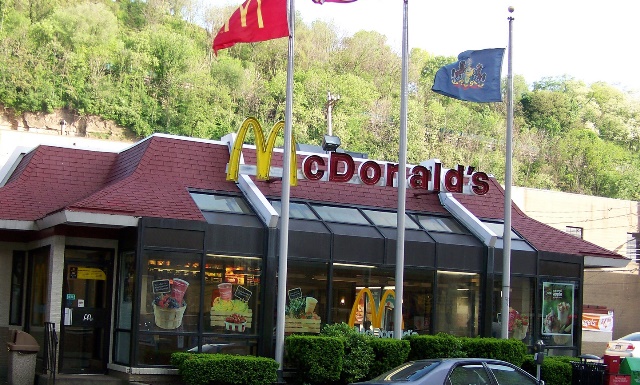My
Experience in the Strip District

When I went to the Strip District, I was glad that it wasn’t full of strip clubs like I thought it was, which would have made for an odd class trip. Instead, it’s a strip of land that is lined-up with stores.
The drive to Pittsburgh gives me anxiety, mainly because there are too many things going on and I don’t know the exact way like I do with all of my other destinations; the city is definitely a different experience.
We got lost, found the destination, but we had no idea where to park. I wondered if parking at McDonalds would be okay, but being afraid of being towed, I searched for another parking spot, driving along a very long, wide street where there was parking on either side; the only parking lot and parking spots were on the left, which would mean me having to cross lanes, and I didn’t want to get a ticket or cause an accident. There were hordes of people crossing and moving along the sidewalks that I drove so slow due to being afraid of hitting someone.
So I drove around and accidentally went onto the road where I’d be forced to cross the bridge, then had to drive around and cross the bridge again. So, I ended up parking at good ol’ Mickey D’s.

We crossed the street and saw the Wholey’s parking lot, which made me want to face-palm myself, but hey, the parking at McDonalds was free. There was a cacophony of music in front of Wholey’s, and I turned to see a band named (I believe) The Chiodi Trio, and the music reminded me of banjos and country, which made me want to run in the store faster to get away from the sound.
When a wall of seafood smell hit my nose, I was sorry for getting into the store so quickly. It almost activated my gag reflex and made me want to throw up; I love seafood like crab and lobster, shrimp, and fish, but this seafood smell was at a whole new level, as if I was in a shipyard full of boxed seafood.
We then searched for our professor and other classmates, and didn’t find them until we went in the back of the store. Above us there were three or four singing pigs, singing “Hi Ho The Cheerio.” Below them was a balloon man who was shaping his balloons into whatever the asker desired.
In the gigantic fish tanks were an innumerous amount of fish swimming, and when I looked in a box below labeled perishable, I was surprised to see live lobsters all piled together with their claws tied; I wondered if this was humane for lobsters? But what do I know about animal cruelty laws. I guess they would go bad quickly if they were dead, thus the reason for the label “perishable” on the box.
And on top of a large shelf full of ice were dead fish; the dead fish looked like they had so much emotion, which was forever shown on their countenance as they went into paralysis during death. One fish had a mouth open with sharp teeth, as if he was trying to say something, and another fish had only a tongue sticking out almost looking like he died in a cartoon.


These fish I briefly stared at as two classmates were interviewing an employee who served in Vietnam; from what I heard, he refused education and has been working there for over twenty years. If I worked at a place like that for even one year, I’d probably go insane and bash my head in; and in a moment like this, I admire the employees who are able to work these jobs, because there are many jobs like this one that I just wouldn’t be able to do.
After Wholey’s, we toured other food places, one full of chocolates and another full of different cheeses. I rarely travel into places like these, so I was amazed and in wonder at each store I went to.
My favorite place was the church, and its peaceful gospel music. This felt like the most peaceful place on earth to me. I loved it. I could have sat there for quite a long while.


Eventually we went into a Mexican restaurant (unfortunately I don’t remember the name), which had a different atmosphere all-together, both in setting, music, and food. There was Mexican music playing, and behind our table in a room with machines emitted a constant screeching sound, where we discovered they make their tacos. Eventually, and fortunately, the sound stopped. Next to us was an author and professor from Point Park; he wrote about the Penn State fiasco when it happened in a book of his.
The steak taco I ordered was delicious, as well was the four salsas we ordered with our tortilla chips. Rarely can restaurants make me feel this way, but I want to eat there again. Under the receipt I slipped my phone number on a piece of paper for our young, pretty, blonde waiter, even though I knew she wouldn’t text or call.
As we walked back, everyone was closing up shop for the day, and when we arrived at McDonalds, my white ’03 Chevrolet Cavalier Sport was still there, thankfully. We had a smooth ride back, listening to music and chatting along the way.
All in all, it was a very fun trip to the Strip.







